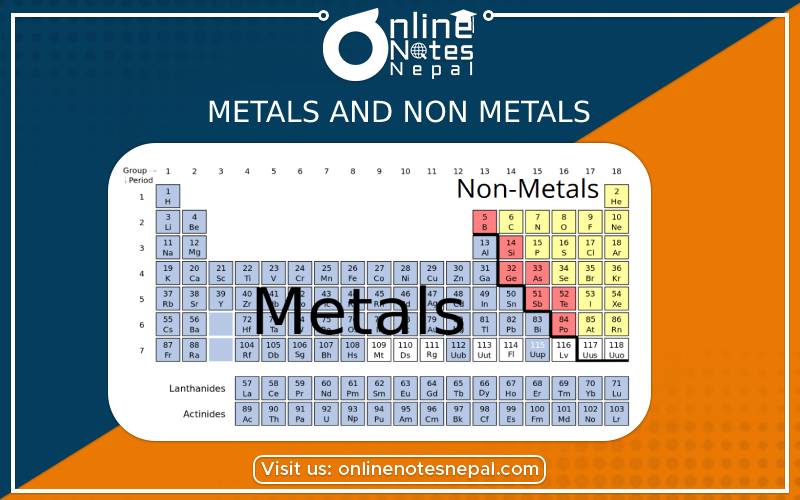Published by: Nuru
Published date: 16 Jan 2022

Athe elements have been divided into two classes: metals and non-metals. 80% of the total elements (known till now) are metals. Metals are the good conductor of heat and electricity, they are malleable and ductile. Most of the metals are found in combined state.
Metals are strong and are useful for making tools, buildings, bridges and other structures where strength is important. The most abundant metal on the earth is iron.The tallest free-standing structures in the world are made of metals, primarily the alloy steel. They include the Dubai skyscraper Burj Kalifa, the Tokyo television tower Skytree, and the Shanghai Tower skyscraper. Some of the examples of metals are copper, gold, iron, aluminium, etc.
Physical properties
Chemical properties
Non- metals are the bad conductor of heat and electricity. They are found mostly in the gaseous form. Some of the examples of non- metals are elements like hydrogen, nitrogen, oxygen, phosphorous, chlorine etc. They are electronegative in nature. Non- metals are found in earth's crust and atmosphere. The human body also contains non- metals. The hardest and most precious non- metal is a diamond. Some of the properties of non- metals are given below,
Properties of Metals
Physical properties
Chemical Properties
| Properties | Metals | Non-metals |
| State | All, except mercury, metals are solid at ordinary temperature. | Non-metals are found in all three states at ordinary temperature. |
| Metallic lusture | They possess metallic luster when they are freshly cut. Except lithium. | Non-metals except Iodine and graphite, do not possess any metallic luster. |
| Hardness | They are generally hard because the molecules are closely packed in them. | They are generally soft in nature except diamond. |
| Breakability | They are hardly broken into pieces. | They can be easily broken. |
| Melting and boiling point | The melting and boiling points of metals are generally high. | They have usually low melting and boiling points. |
| Metallic clink | Metals, when struck with a hammer emit a peculiar sound called metallic clink. | They do not emit any metallic sound. |
| Malleability | They can be beaten into thin plate except antimony, arsenic, and bismuth. Such property is known as malleability. | They are non-malleable. |
| Ductility | Wire can be made from metals. Such property is known as ductility. | They are non-ductile. |
| Conductivity | They are generally good conductors of heat and electricity. | They are poor conductors of heat and electricity except graphite. |
| Specific gravity | They have high specific gravity except Li, Na, K, Ca etc. | They have low specific gravity except diamond. |
| Electrochemical behavior | They form cations or electropositive ions by the loss of electrons. | They form anions or electronegative ions by the gain of electrons. |
| Alloy formation | Metals have the dissolving power to the other metals to form a homogenous mixture. | They generally do not form alloys. |
| Reaction with oxygen | Metals forms basic oxides. | Non-metals form an acidic oxide. |
| Reaction with hydrogen | Metals rarely combines with hydrogen to form unstable hydrides. | Non-metals usually combine with hydrogen to give stable hydrides. |
| Reaction with acids | Most of the metals reacts with dilute acids to form salts and hydrogen. | Usually non-metals do not form salts. |
The elements that show the properties of both metals and non-metals are called metalloids. Examples of metalloids are arsenic, antimony and germanium.
Metalloids possess the following characteristics:
Alloys:
An alloy is defined as a homogeneous mixture of two or more metals and non-metals. For example, brass is an alloy of copper and zinc.
Alloys have the following properties: